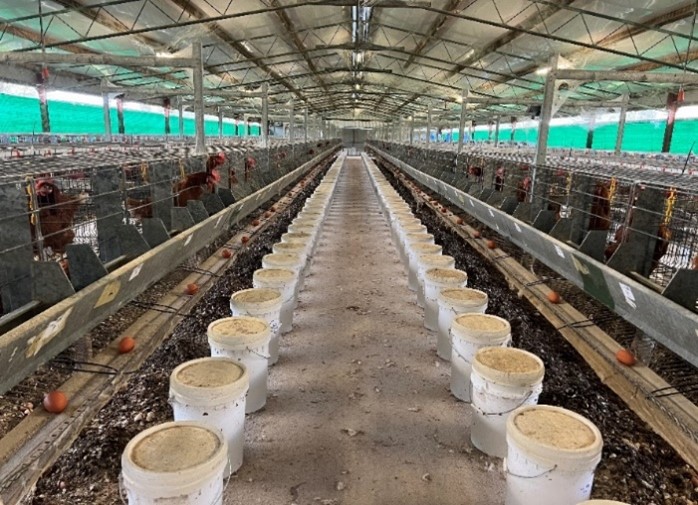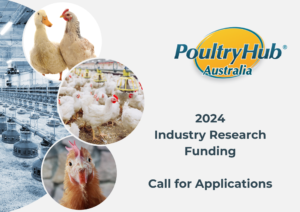Reducing crude protein levels of diets for poultry feed has received increasing interest due to the potential benefits for improved feed efficiency, gut health, and litter quality; while also reducing water intake, nitrogen and ammonia emission, and reliance on expensive imported soybean meal. This study, funded under PHA’s Research in Industry Open Call program, and undertaken by UNE researchers Dr Amy Moss and Dr Thi Hiep Dao, aimed to determine the limiting order of essential amino acids for laying hens fed practical Australian reduced-protein diets based on wheat and sorghum. The results of this study showed that after lysine, methionine and threonine; isoleucine, valine and tryptophan/arginine/phenylalanine may be considered as the fourth, fifth and co-sixth limiting amino acids when ranked based on egg mass.
PHA 21-306: Determining the order of limiting amino acids in practical Australian reduced protein diets for laying hens
Reducing crude protein levels of diets for poultry feed has received increasing interest due to the potential benefits for improved feed efficiency, gut health, and litter quality; while also reducing water intake, nitrogen and ammonia emission, and reliance on expensive imported soybean meal. To reduce the crude protein levels of diets while still meeting amino acid requirements, synthetic or crystalline amino acids are added to the diet. However, crystalline amino acids are expensive and thus only the minimum amounts needed are added. Within standard poultry diets only a handful of amino acids may be limiting and are required to be added to the diet. However, by reducing dietary protein levels, deficiency of single or multiple amino acids is possible, and the inclusion of crystalline amino acids only becomes more important. Due to the expense of crystalline amino acids, the relative importance of amino acids or limiting amino acid order is important to determine, so we know which are the most vital to include in a situation where diet cost must be minimised. Therefore, this study aimed to determine the limiting order of essential amino acids for laying hens fed practical Australian reduced-protein diets based on wheat and sorghum.
The results of this study showed that after lysine, methionine and threonine; isoleucine, valine and tryptophan/arginine/phenylalanine may be considered as the fourth, fifth and co-sixth limiting amino acids when ranked based on egg mass. Whereas, leucine, histidine and glycine may be considered non-essential amino acids as the egg mass of hens fed these diets were similar to those fed the normal protein diet and reduced-protein diet with sufficient levels of all essential amino acids. However, if the amino acid order is ranked based on the feed conversion ratio (FCR), valine may be considered the fourth limiting amino acid, and tryptophan, isoleucine, arginine and histidine may be considered as co-fifth limiting amino acids. Leucine, phenylalanine, and glycine may be considered as non-essential amino acids after lysine, methionine and threonine in reduced-protein diets for laying hens. The findings of this study also demonstrated that reduced-protein diets with 20 g/kg lower crude protein level compared to normal protein diets can be achieved without negative effects on laying performance and egg quality of the hens. Determining the orders of essential amino acids based on FCR may be more meaningful than the egg mass in practice as FCR could reflect the economic efficiency of the farms. Additionally, the results of this study showed that hens offered the reduced-protein diets had lower protein intake and excretion compared to hens fed the normal protein diet. This demonstrated the environmental benefits of feeding reduced-protein diets by reducing the nitrogenous waste released to the environment through birds’ excreta compared to the normal protein diets. The finding of this study may facilitate precise feed formulation and help to extend the adoption of reduced protein diets in layer hen production, resulting in improved economic and environmental outcomes and reduce the industry reliance on imported ingredients such as soybean meal.
The full report of this study can be found here.





